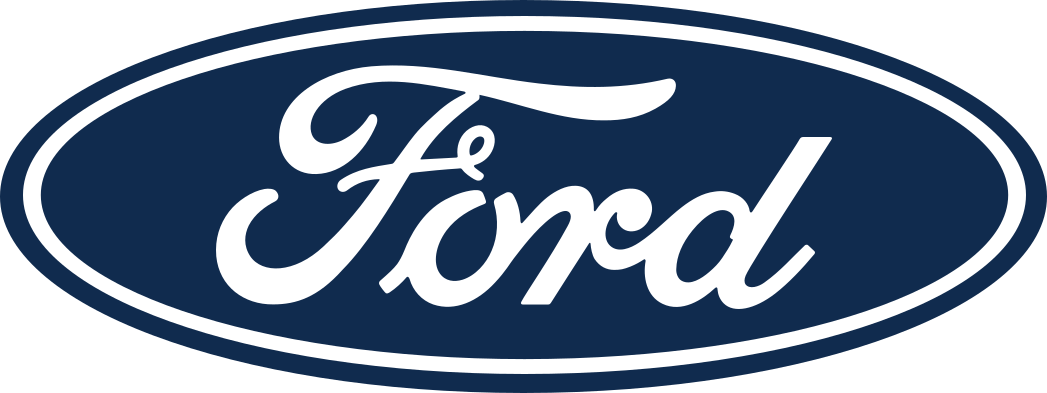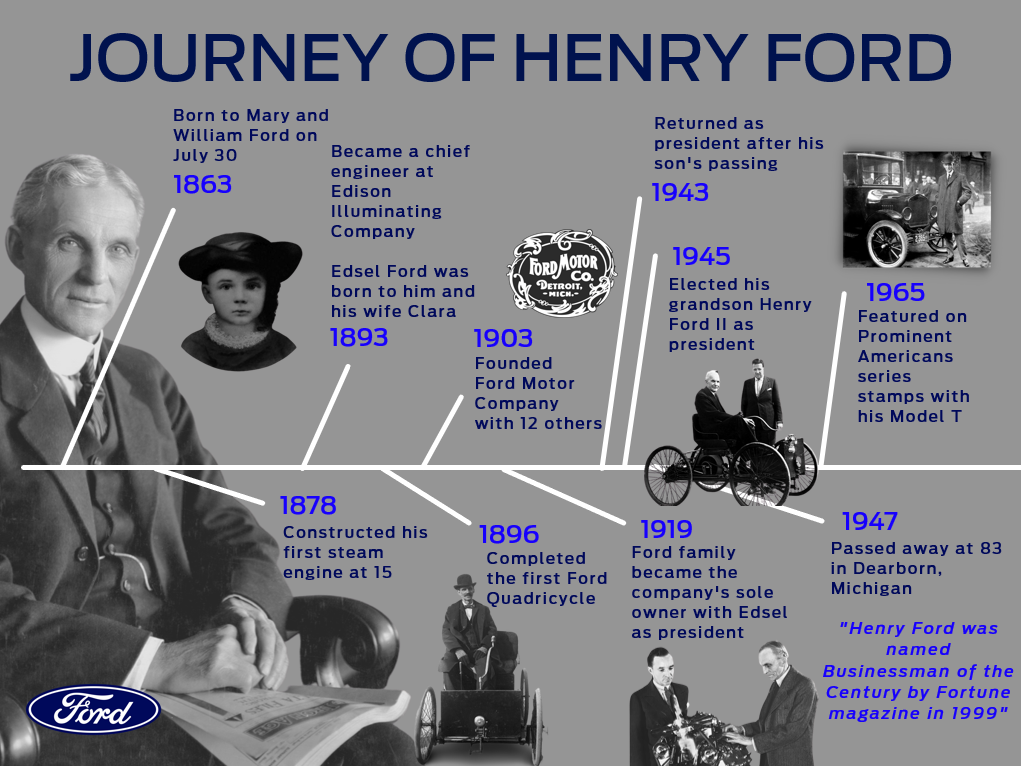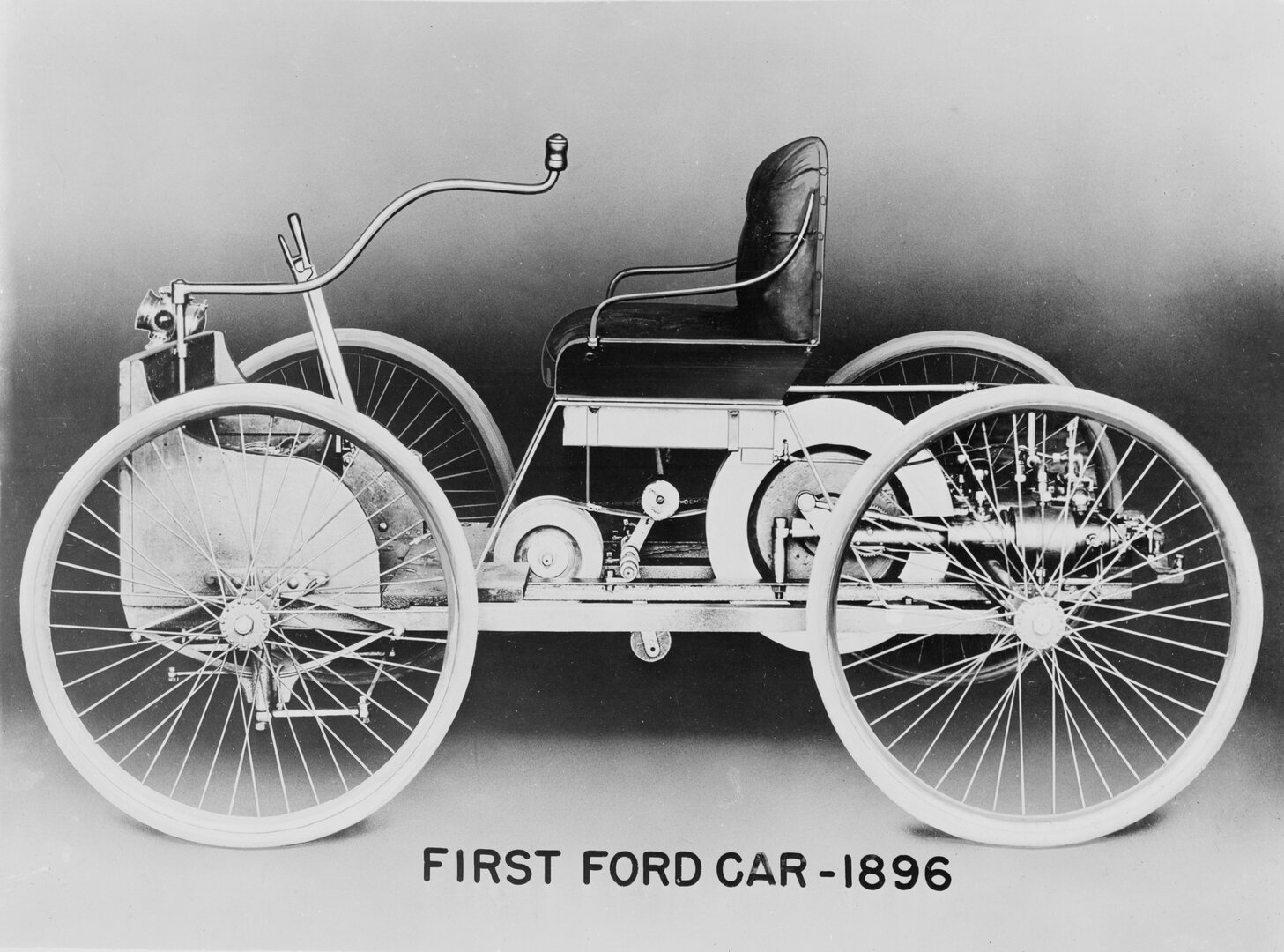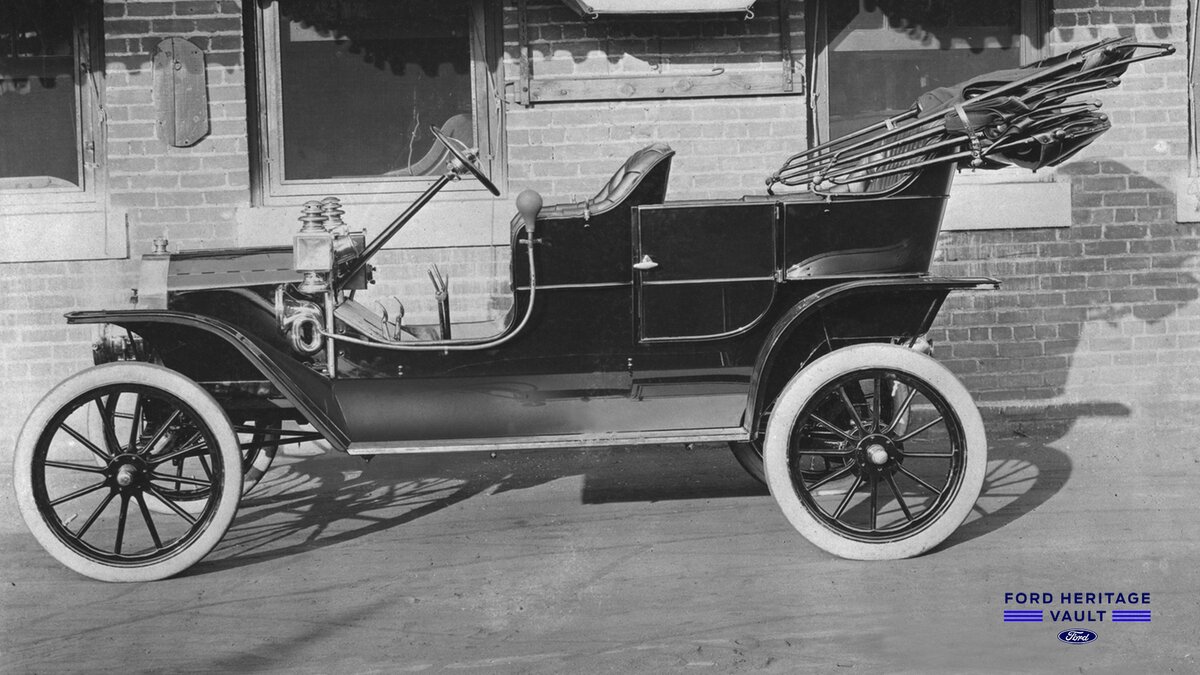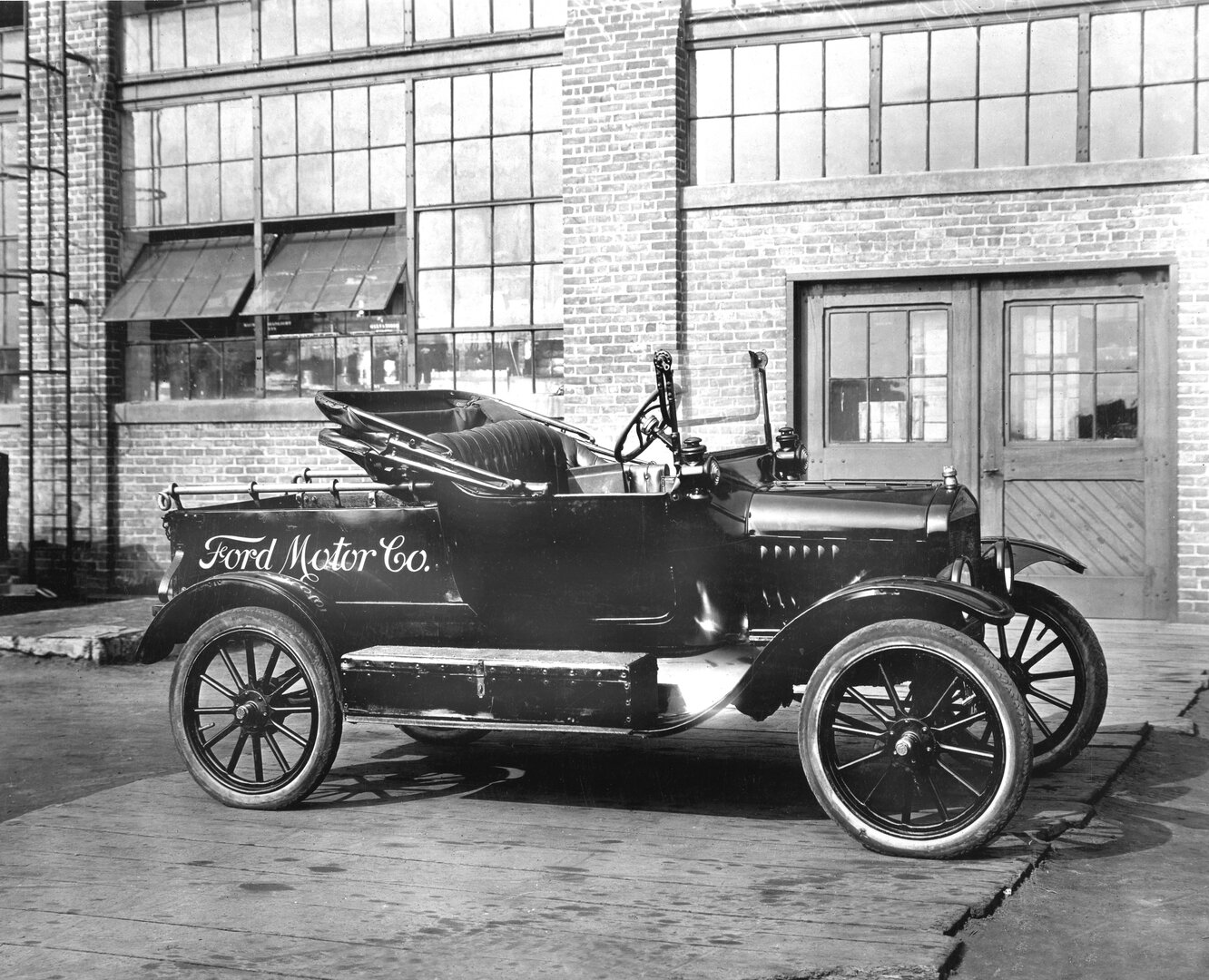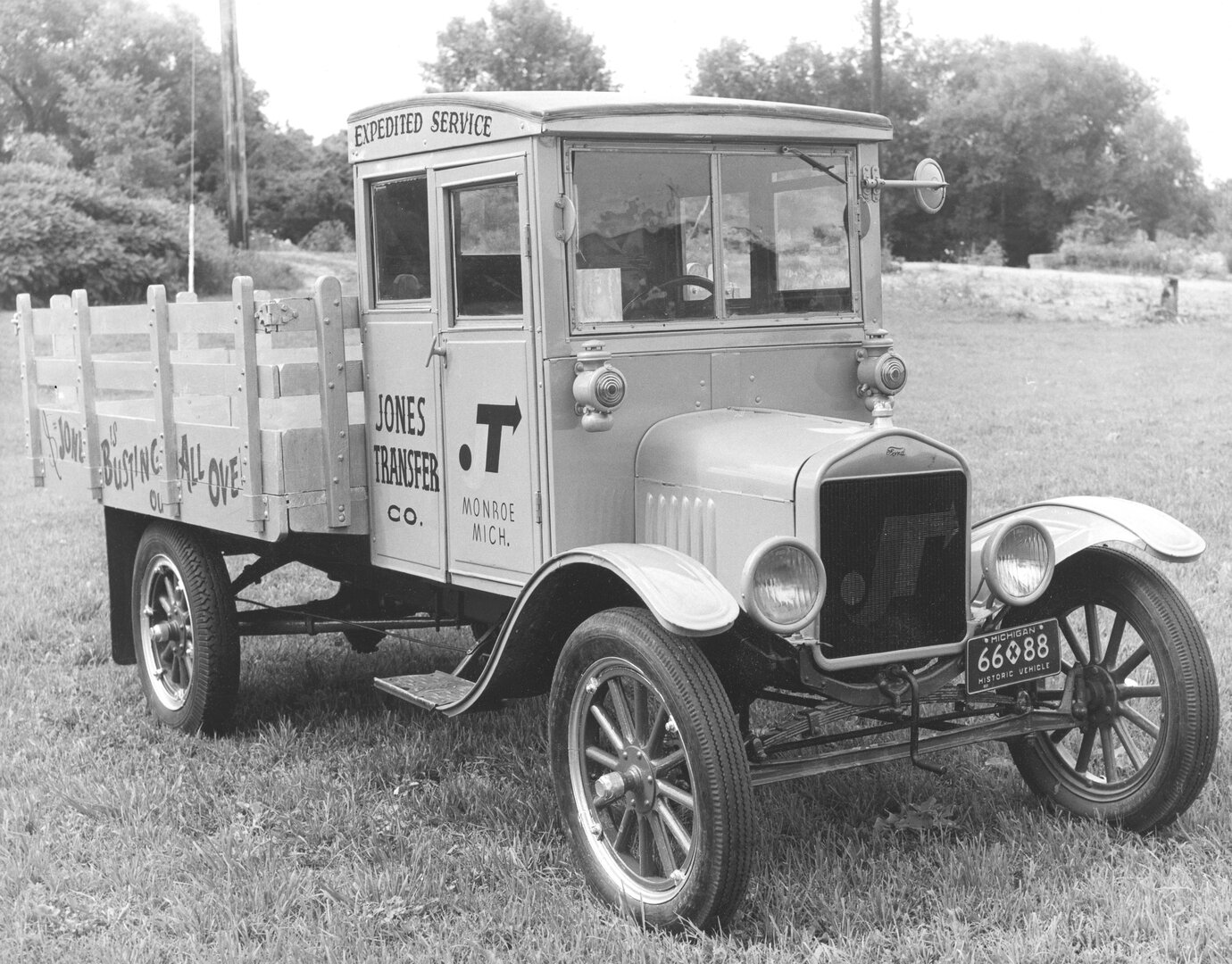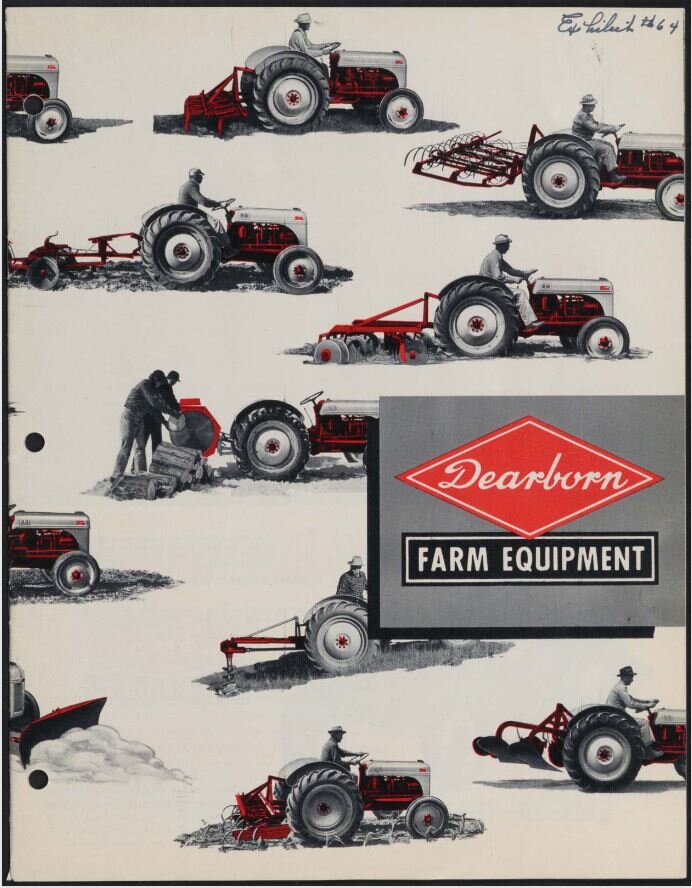Ford Heritage
Henry Ford was born on his parents’ farm in Greenfield Township, Michigan on July 30, 1863. He was the first person to make dependable automobiles that were affordable enough for just about any American family to own. As a result, he forever transformed the meaning of transportation, and the way manufacturing is done.
Today, it’s almost impossible to imagine a world without cars. Before Henry Ford was born, most moving vehicles were pulled by horses or mules.
Today, it’s almost impossible to imagine a world without cars. Before Henry Ford was born, most moving vehicles were pulled by horses or mules.
Henry Ford was born on his parents’ farm in Greenfield Township, Michigan on July 30, 1863. He was the first person to make dependable automobiles that were affordable enough for just about any American family to own. As a result, he forever transformed the meaning of transportation, and the way manufacturing is done.
Today, it’s almost impossible to imagine a world without cars. Before Henry Ford was born, most moving vehicles were pulled by horses or mules.
When he was twelve years old, while travelling to the nearby city of Detroit, the most impactful event occurred. Henry, together with his father, saw a huge, chugging, clanking, steam-driven engine coming down the road towards them. It was the first self-propelled vehicle Henry had ever seen. The moment he saw this, it was decided that he will become a machinist – someone who builds and repairs machines.
He started by practicing building small steam engines and improved his mechanical skills by fixing his neighbors’ broken pocket watches. He even crafted tiny tools to repair the watches. At sixteen, Henry left home to travel to Detroit to work at different machine shops and learn all he could about mechanics.
Henry returned to his family farm after three years and was given by his father forty acres of land to set up a sawmill. He also began thinking more seriously about building a horseless carriage. During this time, Henry met his future wife, Clara Bryant. They married on April 11, 1888.
Henry and Clara moved back to Detroit and got a job immediately at the Edison Illuminating Company, which built electric power stations. Henry worked there as an engineer and machinist, and in his spare time, he read everything he could find about building engines. When at home in his workshop, Henry worked on a gasoline engine that would someday power his horseless carriage. Today, a replica of this workshop is on display at Greenfield Village in Dearborn, Michigan.
Henry Ford did not invent the gasoline engine, nor the internal combustion engine. It was invented just before Henry was born. But he still thought they could be better than steam engines.
Henry Ford did not invent the automobile, either. A few carmakers had been around for years, but their cars were too expensive for most Americans to own. Also, these early cars were difficult to handle. There were also a small number of cars built for racing, which was just starting to become a popular sport at the time. Henry’s goal was to make a car that was reliable and was affordable for anyone and everyone to own.
In November 1893, Clara and Henry had their only child, Edsel. About a month later, Henry brought his first gasoline engine into the kitchen to test, and it was successful in starting up. The engine worked.
A few days later, Henry started building a larger engine that would be powerful enough to run a vehicle. Then, with the help of some mechanic friends, Henry built a frame with bicycle wheels, a seat, and steering stick called a tiller. In 1896, Henry took his first horseless carriage for a test ride down the streets of Detroit. Henry called his first car a “quadricycle”.
Today, it’s almost impossible to imagine a world without cars. Before Henry Ford was born, most moving vehicles were pulled by horses or mules.
When he was twelve years old, while travelling to the nearby city of Detroit, the most impactful event occurred. Henry, together with his father, saw a huge, chugging, clanking, steam-driven engine coming down the road towards them. It was the first self-propelled vehicle Henry had ever seen. The moment he saw this, it was decided that he will become a machinist – someone who builds and repairs machines.
He started by practicing building small steam engines and improved his mechanical skills by fixing his neighbors’ broken pocket watches. He even crafted tiny tools to repair the watches. At sixteen, Henry left home to travel to Detroit to work at different machine shops and learn all he could about mechanics.
Henry returned to his family farm after three years and was given by his father forty acres of land to set up a sawmill. He also began thinking more seriously about building a horseless carriage. During this time, Henry met his future wife, Clara Bryant. They married on April 11, 1888.
Henry and Clara moved back to Detroit and got a job immediately at the Edison Illuminating Company, which built electric power stations. Henry worked there as an engineer and machinist, and in his spare time, he read everything he could find about building engines. When at home in his workshop, Henry worked on a gasoline engine that would someday power his horseless carriage. Today, a replica of this workshop is on display at Greenfield Village in Dearborn, Michigan.
Henry Ford did not invent the gasoline engine, nor the internal combustion engine. It was invented just before Henry was born. But he still thought they could be better than steam engines.
Henry Ford did not invent the automobile, either. A few carmakers had been around for years, but their cars were too expensive for most Americans to own. Also, these early cars were difficult to handle. There were also a small number of cars built for racing, which was just starting to become a popular sport at the time. Henry’s goal was to make a car that was reliable and was affordable for anyone and everyone to own.
In November 1893, Clara and Henry had their only child, Edsel. About a month later, Henry brought his first gasoline engine into the kitchen to test, and it was successful in starting up. The engine worked.
A few days later, Henry started building a larger engine that would be powerful enough to run a vehicle. Then, with the help of some mechanic friends, Henry built a frame with bicycle wheels, a seat, and steering stick called a tiller. In 1896, Henry took his first horseless carriage for a test ride down the streets of Detroit. Henry called his first car a “quadricycle”.
When he was twelve years old, while travelling to the nearby city of Detroit, the most impactful event occurred. Henry, together with his father, saw a huge, chugging, clanking, steam-driven engine coming down the road towards them. It was the first self-propelled vehicle Henry had ever seen. The moment he saw this, it was decided that he will become a machinist – someone who builds and repairs machines.
He started by practicing building small steam engines and improved his mechanical skills by fixing his neighbors’ broken pocket watches. He even crafted tiny tools to repair the watches. At sixteen, Henry left home to travel to Detroit to work at different machine shops and learn all he could about mechanics.
Henry returned to his family farm after three years and was given by his father forty acres of land to set up a sawmill. He also began thinking more seriously about building a horseless carriage. During this time, Henry met his future wife, Clara Bryant. They married on April 11, 1888.
Henry and Clara moved back to Detroit and got a job immediately at the Edison Illuminating Company, which built electric power stations. Henry worked there as an engineer and machinist, and in his spare time, he read everything he could find about building engines. When at home in his workshop, Henry worked on a gasoline engine that would someday power his horseless carriage. Today, a replica of this workshop is on display at Greenfield Village in Dearborn, Michigan.
Henry Ford did not invent the gasoline engine, nor the internal combustion engine. It was invented just before Henry was born. But he still thought they could be better than steam engines.
Henry Ford did not invent the automobile, either. A few carmakers had been around for years, but their cars were too expensive for most Americans to own. Also, these early cars were difficult to handle. There were also a small number of cars built for racing, which was just starting to become a popular sport at the time. Henry’s goal was to make a car that was reliable and was affordable for anyone and everyone to own.
In November 1893, Clara and Henry had their only child, Edsel. About a month later, Henry brought his first gasoline engine into the kitchen to test, and it was successful in starting up. The engine worked.
A few days later, Henry started building a larger engine that would be powerful enough to run a vehicle. Then, with the help of some mechanic friends, Henry built a frame with bicycle wheels, a seat, and steering stick called a tiller. In 1896, Henry took his first horseless carriage for a test ride down the streets of Detroit. Henry called his first car a “quadricycle”.
He started by practicing building small steam engines and improved his mechanical skills by fixing his neighbors’ broken pocket watches. He even crafted tiny tools to repair the watches. At sixteen, Henry left home to travel to Detroit to work at different machine shops and learn all he could about mechanics.
Henry returned to his family farm after three years and was given by his father forty acres of land to set up a sawmill. He also began thinking more seriously about building a horseless carriage. During this time, Henry met his future wife, Clara Bryant. They married on April 11, 1888.
Henry and Clara moved back to Detroit and got a job immediately at the Edison Illuminating Company, which built electric power stations. Henry worked there as an engineer and machinist, and in his spare time, he read everything he could find about building engines. When at home in his workshop, Henry worked on a gasoline engine that would someday power his horseless carriage. Today, a replica of this workshop is on display at Greenfield Village in Dearborn, Michigan.
Henry Ford did not invent the gasoline engine, nor the internal combustion engine. It was invented just before Henry was born. But he still thought they could be better than steam engines.
Henry Ford did not invent the automobile, either. A few carmakers had been around for years, but their cars were too expensive for most Americans to own. Also, these early cars were difficult to handle. There were also a small number of cars built for racing, which was just starting to become a popular sport at the time. Henry’s goal was to make a car that was reliable and was affordable for anyone and everyone to own.
In November 1893, Clara and Henry had their only child, Edsel. About a month later, Henry brought his first gasoline engine into the kitchen to test, and it was successful in starting up. The engine worked.
A few days later, Henry started building a larger engine that would be powerful enough to run a vehicle. Then, with the help of some mechanic friends, Henry built a frame with bicycle wheels, a seat, and steering stick called a tiller. In 1896, Henry took his first horseless carriage for a test ride down the streets of Detroit. Henry called his first car a “quadricycle”.
Thomas Edison was Henry Ford's hero. In 1896, shortly after building his quadricycle, Henry Ford had the chance to meet the famous inventor at a convention in New York. Edison, who was convinced the future lie in electric powered cars, encouraged Ford to "keep at it." In 1907, Ford was on the brink of releasing the Model T. The inventors forged a friendship that lasted their whole lives.
Two iconic inventors. One adorable tale of best friends. Their world-changing accomplishments are well known, but the genuine friendship of Thomas Edison and Henry Ford makes for a delightful story not many people have heard. Just one brief encounter led to a lifelong bond so strong that the men even ended up buying neighboring vacation homes in Fort Myers, Florida.
The quadricycle impressed the mayor of Detroit so much that he offered to raise funds to start up an automobile company called the Detroit Automobile Company. It did not last long, though. Neither did Henry Ford’s next company, the Henry Ford Company.
One problem was that not enough people knew about Henry’s cars. Henry decided to fix that problem right away. He began to build race cars. Henry knew that people were crazy about car races. When Henry entered his first race, he surprised everyone by finishing in first place! Suddenly, there were lots of newspaper stories about Henry Ford and his hot new racing car. Winning races really helped his cars get attention. He started a third company, the Ford Motor Company, and it became a huge success!
Henry named his first cars after letters of the alphabet. And one of the most popular was Model T.
Henry’s biggest problem was how to make enough cars for the thousands of people who wanted one. This challenge helped Henry Ford come up with his most important and influential idea. The assembly line.
Two iconic inventors. One adorable tale of best friends. Their world-changing accomplishments are well known, but the genuine friendship of Thomas Edison and Henry Ford makes for a delightful story not many people have heard. Just one brief encounter led to a lifelong bond so strong that the men even ended up buying neighboring vacation homes in Fort Myers, Florida.
The quadricycle impressed the mayor of Detroit so much that he offered to raise funds to start up an automobile company called the Detroit Automobile Company. It did not last long, though. Neither did Henry Ford’s next company, the Henry Ford Company.
One problem was that not enough people knew about Henry’s cars. Henry decided to fix that problem right away. He began to build race cars. Henry knew that people were crazy about car races. When Henry entered his first race, he surprised everyone by finishing in first place! Suddenly, there were lots of newspaper stories about Henry Ford and his hot new racing car. Winning races really helped his cars get attention. He started a third company, the Ford Motor Company, and it became a huge success!
Henry named his first cars after letters of the alphabet. And one of the most popular was Model T.
Henry’s biggest problem was how to make enough cars for the thousands of people who wanted one. This challenge helped Henry Ford come up with his most important and influential idea. The assembly line.
Henry didn’t invent the assembly line, but he brought his process to car making. Producing more cars quickly allowed Henry to drop the prices making it more affordable.
Henry had built a factory on the Rouge River in Dearborn, Michigan. He expanded this plant and soon it manufactured not just cars, but also steel and other materials. It even had its own electric power plant. Henry Ford eventually branched out into making other kinds of vehicles. He built passenger planes, tractors, and trucks.
Henry had built a factory on the Rouge River in Dearborn, Michigan. He expanded this plant and soon it manufactured not just cars, but also steel and other materials. It even had its own electric power plant. Henry Ford eventually branched out into making other kinds of vehicles. He built passenger planes, tractors, and trucks.
During World War I and II, Ford supplied the U.S military with ambulances, cars, trucks, airplane engines, bomber planes, and tanks.
Today, the Ford Motor Company is still one of the top carmakers in the world.
Near the end of his life, Henry enjoyed adding to his collections of machinery and other historic objects at the Henry Ford Museum and Greenfield Village in Dearborn, Michigan. Greenfield Village is an outdoor museum where Henry Ford remembered the American life from his earliest days. In 1947, Henry Ford died peacefully in his home at the age of 83.
Today, the Ford Motor Company is still one of the top carmakers in the world.
Near the end of his life, Henry enjoyed adding to his collections of machinery and other historic objects at the Henry Ford Museum and Greenfield Village in Dearborn, Michigan. Greenfield Village is an outdoor museum where Henry Ford remembered the American life from his earliest days. In 1947, Henry Ford died peacefully in his home at the age of 83.
Discover the Ford That Fits You
Discover the Ford That Fits You
Follow Ford Malaysia
Ford Sales Chat Is Now On WhatsApp
Our sales chat is currently operating on WhatsApp from Monday to Friday, 10AM to 7PM & Saturday 10AM to 2PM (excluding public holidays).
For Aftersales / Parts / Warranty enquiries, contact our Customer Care Centre at 1300 383 181 Monday – Friday 9AM to 5PM (excluding public holidays) or email [email protected].
Click the button below to get the conversation started.
For Aftersales / Parts / Warranty enquiries, contact our Customer Care Centre at 1300 383 181 Monday – Friday 9AM to 5PM (excluding public holidays) or email [email protected].
Click the button below to get the conversation started.
